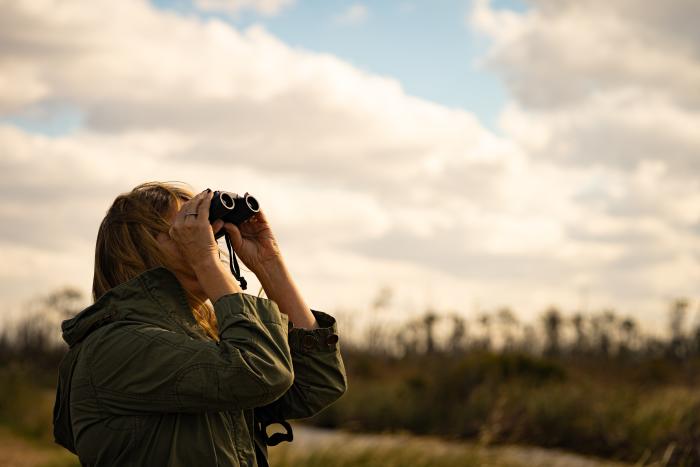Outer Banks Birding
The Outer Banks of North Carolina is known world-wide for having the best birding opportunities on the East Coast of North America. “Birding the Banks” offers more than just spotting birds as a diversion and adding to one’s life list.
Jump to:
Friends of fowls
Begun in 1997, the annual Wings Over Water Wildlife Festival draws visitors from across the US and several foreign countries including Canada, Great Britain, Germany and Thailand.
The festival and newer event, Wings Encore, offer a long list of programs ranging from birding trips, photography, drawing and other natural history interests for a week-long adventure that packs a lot into each day.
The 110-mile long Dare Outer Banks has topography and geography that make the 1,563-square-mile area a unique living history museum. Habitat found on the Outer Banks includes swamp and pocosins, hardwoods and scrubs, and both fresh and saltwater. Beach sand is the favorite nesting site for some species. In addition to resident species, the Atlantic Flyway and the Gulf Stream bring hundreds of birds to or near Dare County every year.
What about those birds Pea Island National Wildlife Refuge?
The Outer Banks is in the Atlantic Flyway, the major north-south flyway for migrating birds headed from northern locales of Canada, the Arctic and Greenland to South America and even Antarctica. The busiest portion of the flyway covers very little landmass, thus most of it is over or close to water including the Atlantic Ocean and the Gulf of Mexico, however the Outer Banks welcome hundreds of species each migration.
The strip of sand that runs along NC 12 between Oregon Inlet and the village of Rodanthe on Hatteras Island is known as Pea Island National Wildlife Refuge, a U.S. Department of Interior sanctuary that is a favorite among birders visiting the Outer Banks.Bordered on the east by the ocean and the west by Pamlico Sound, Pea Island National Wildlife Refuge spans the 13 northernmost miles of Hatteras Island, despite the name, and runs parallel to Cape Hatteras National Seashore for that length. The wildlife preserve provides critical habitat for a variety of different types of beach-nesting birds, especially in the summer months.
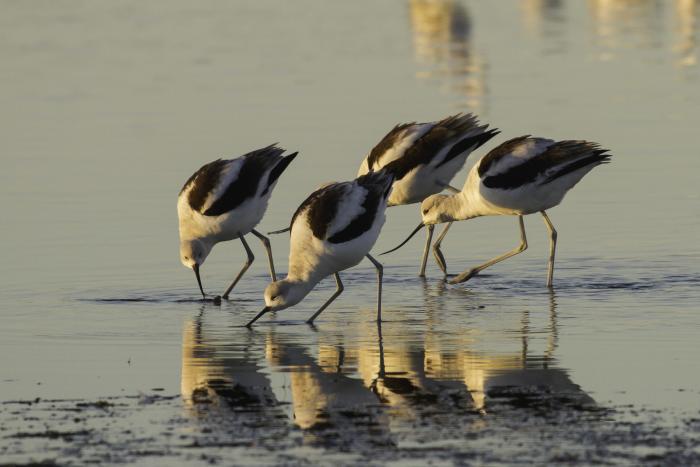
Examples of visiting fowl include colonial nesting birds such as terns and black skimmers which choose safety in numbers. The American Oyster oystercatcher and piping plovers are solitary nesters and want to be alone during breeding season. Willets are found on Pea Island year-round but are actually two different breeds. The Eastern Willet migrates away from the area in late fall but is quickly replaced by the Western Willet that stays until the Eastern returns in the spring.
Of course, there has to be something from the Old World on Pea Island. The Eurasian Widgeon often can be found during the winter months in one of the impoundments. Just look through the flocks of American Widgeon for a drake or two with a rusty red head.
American Avocets with their striking black and white plumage are around all year and use their upturned bill to search for prey. Falcons are spotted during the fall migration and up until late March. The American Kestrel mainly feeds on perch, insects and mammals such as small birds and rodents. Osprey – large birds with black backs and white bellies – can often be seen around Pea Island hovering over water with their talons extended hunting for fish. Peregrine Falcon are most common during the fall migration but also can be spotted in the winter as they hunt for waterfowl and shorebirds. Ducks including American Black Duck, Canvasback, Pintails and Red Heads are often found in the waters on Pea Island. The Black Duck is the wariest and will take flight in a heartbeat. Brown Pelicans, are always a joy to see with their long bills and throat pouches used for capturing fish and crustaceans. Great Blue Herons and Great Egrets are known for their long legs as they wade around the edges of the impoundments or along the shore on the western side of this part of Hatteras Island facing Pamlico Sound.
But these are just a small fraction of the birds that can be found at Pea Island National Wildlife Refuge! The egrets and herons have earned special recognition by being the most particular birds used to push for the Migratory Bird Act Treaty of 1918 which has allowed the numbers of birds to increase over the last 100 years.
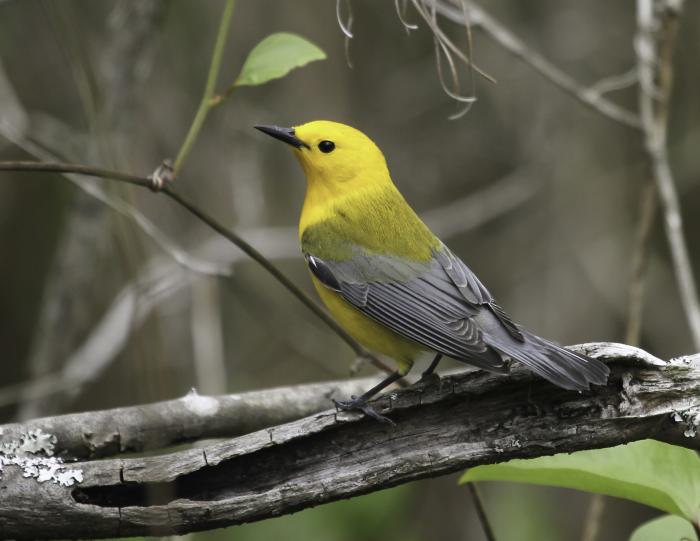
More than 500 species of the feathered wonders make the annual trek from their breeding grounds in the north to their winter homes farther south. Many of these are waterfowl including various species of geese, swan and ducks of all sorts. Waders – species such as egrets and herons – are sometimes referred to as waterfowl but actually are properly termed waders.
The birds that winter on the Outer Banks has attracted birders, sportsmen and commercial hunters for more than 150 years. At the turn of the last century, the latter group was making a particularly significant impact on waterfowl which were hunted and sold for meat. And egrets, herons and other species including Herring Gulls, eagles, humming birds were killed for their feathers and other body parts used in making fashion accessories. It is estimated that 1902, 1.5 tons of egret feathers – equivalent to 200,000 birds – were sold and the number of birds killed in Florida alone was as high as five million. Egret and heron feathers were used to decorate women’s head ornaments such as hats and turbans. Entire birds were used to decorate hats, and hummingbird heads and beaks were made into earrings. Herring gull populations were almost wiped out due to pairs of them killed to make muffs and stoles.
Aigrettes, often a hair ornament, were often made with the wispy white feathers of four egrets that were used in the hairpiece that frequently was held together by gold or silver wire and adorned with valuable gems such as diamonds. Aigrette is the French word for egret. The abundance of migrating species found now on the Outer Banks can be rightly attributed to the Migratory Bird Act Treaty of 1918 which, for the first time, gave federal protection of the migrating species. The Migratory Bird Act Treaty doesn’t cover non-native species such as the European Starling and House Sparrow. Some groups of game birds such as ducks, geese and doves have limited protection and can be hunted in season. The Atlantic Flyway is fascinating to study and learn more about and even better to experience it first-hand.
Outer Banks mainland attractions
Alligator River National Wildlife Refuge on the North Carolina mainland adjacent to the Outer Banks has its own list of birds just waiting to be viewed with a short trip across the Virginia Dare Bridge into federal lands. Although primarily song birds and raptors, the 152,000-acre refuge does have ducks that draws duck-lovers from world-wide.
The Wood Duck – thought by many to be the most beautiful duck – is a permanent resident of the refuge where they nest in tree cavities near or over the water. Chicks usually hatch in April or May and can sometimes be viewed in close range if located within the first couple of fledgling weeks.
Although difficult to see on the refuge, the Red-cockaded Woodpecker also is a permanent resident on Alligator River National Wildlife Refuge. It nests in living pine trees so that sap protects the nests from predators, but some photography and birding tour guides specialize in getting you into their usual roaming grounds.
The Alligator refuge has a diverse population of wildlife making sighting black bears, wolves and coyotes and even butterflies while birding a common occurrence. The name of the park hints at the refuge’s namesake reptile which can be seen by visitors on rare occasions. This part of the North Carolina mainland is the northernmost range of the American Alligator.
Both Barred Owls and Great Horned Owls prowl over the fields, roads and greenery of the refuge in search of its next meal. They feed on both aquatic and land-based prey. Barred Owls fly around in the daytime and don’t seem to mind a looker or two. The Great Horned Owls are more nocturnal and tend to go more for land-based prey a bit larger including other owls. A much-sought bird – Swainson’s Warbler – is an elusive bird that nest in stands of cane in pocosin habitat so often is easier to hear than to see. Another “oh, wow” is the Tundra Swan which is one of the most popular waterfowl species found in the winter on the refuge. They often can be seen from right before Christmas until March. Wild Turkeys can sometimes be spotted in early mornings or evening. Poults – a common generalist name for young birds – can be spotted in late spring and early summer. Black-throated Green Warbler, Indigo Bunting, Prothonotary Warbler, Blue Grosbeak and other song birds can be found throughout the refuge. Ducks such as Green Winged Teal and Northern Pin Tails can be seen in many of the fields that spot the refuge. There’s a long list of birds that can be spotted on the refuge and each day offers a new sighting or two.
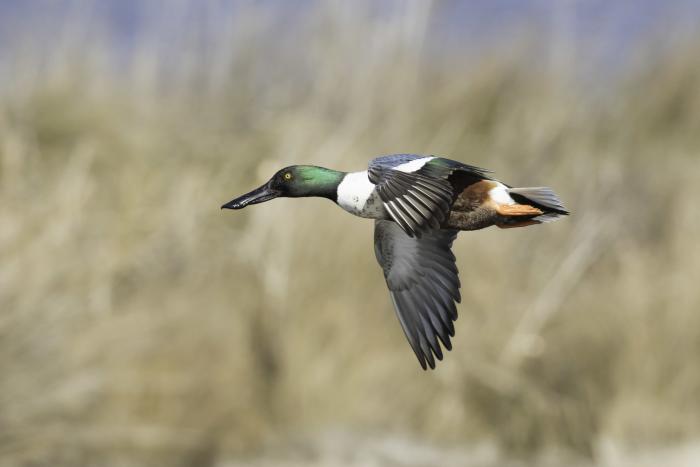
Nags Head Woods, Kitty Hawk Woods Reserve, Buxton Woods & more
Part of the Nature Conservancy, more than 50 species of birds call the Nags Head Woods, one of the Eastern Seaboard’s great old-growth tracts of maritime forests, home throughout the year. Warblers are among the favorites as are Great Blue Herons and egrets. Hundreds more visit along their migration routes making it a great place to add to life lists.
Kitty Hawk Woods Reserve is a unique environment of maritime forest, swamp and marshland. Birders who take the time needed to explore the woods on the 1,824-acre site can find a wealth of hawks, herons, egrets, wrens and more.
The 1,007-acre Buxton Woods is on the southern portion of Hatteras Island and is located within the largest remaining contiguous tract of Maritime Evergreen Forest on the Atlantic coast. The reserve also contains the only occurrence of maritime shrub swamp (dogwood subtype) community in the world. More than 360 species of birds, including bald eagles and peregrine falcons, have been recorded.
Backyard Birding …And they are everywhere!
And then there are song birds such American Robins and Purple Martins that can be seen by the thousands when they take a break from migration. Both birders and nonbirders enjoy watching the nightly arrival of Purple Martins at the William B. Umstead Bridge in Manns Harbor, NC where they roost overnight on the girders holding up the bridge structure during the summer. Also, watching the spring arrival of robins onto the OBX is always a joy to both birders and nonbirders alike.
At night, step outside and take a look at the stars and perhaps hear the chirps and other vocals made by flocks of birds migrating through the air. Some flocks are so massive that they show up on weather radar.
Gulf Stream wonders
The Gulf Stream is a warm water current that begins near the tip of Florida and flows up the East Coast near the Outer Banks before heading for Ireland. The Outer Banks is the closest that the Gulf comes to land in North America which makes it a great place to depart to head out to sea to the warm waters to view pelagic species – birds which rarely ever come ashore, if only to lay eggs and nest. When it reaches the northern portion of the Outer Banks, the Gulf Stream collides with the cold water of the Labrador Current thus creating very rough seas. This collision creates an up-welling of nutrient-rich water that draws fish and birds alike.
These turbulent waters at the collision site have led to the sinking of many vessels over the last 400 years and has been nicknamed “The Graveyard of the Atlantic.” The route of the Gulf Stream varies from year to year but it often is within 12 miles of shore making it a relatively quick trip out to the warm waters. In the Spring, easterly winds often push birds closer to shore and the geographic tip of Cape Hatteras known locally as “the Point” or Cape Point often is a great birding place to see pelagic species without going out onto the water. Be prepared to walk a good clip from one of the National Park Service off-road access ramps unless you bring a 4x4. Driving on the beach does require a mandatory ORV Permit available at Recreation.gov which you can print out and put in your window.
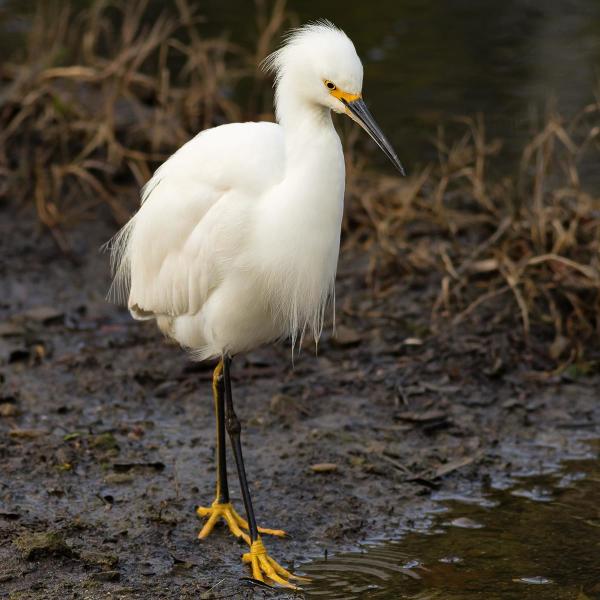
Arctic Terns, several species of shearwater, storm petrels and Brown Boobys are just a few of the species that sometimes can be seen there from land. If looking for gulls to add to a life list, Cape Point is the place to go. In recent years, pelagic birds have become increasingly interesting to researchers. Because the birds are most often off shore, they have not had the scientific scrutiny that land species have had so new information about them is found each year.
With no fresh water available to drink, pelagic birds have a special gland that filters out the salt from the ocean water so that it doesn’t get into their blood stream. The salt residue from the process leaves the body through the birds’ noses. The Sooty Tern is arguably one of the most interesting pelagic birds. Although not an annual event, many years Sooty Terns can be spotted at or near Cape Point on Hatteras Island. It lands only to breed and can stay in the air for three to 10 years. It gets its sleep by napping one to two seconds at a time while flying. This limited sleep apparently doesn’t affect the health of the bird that is estimated to live up to 30 years.
It skims the water to feed because its feathers are not waterproof and can become waterlogged. When it joins the breeding colonies in the north, there is so much noise made by the collection of terns that OSHA recommends that anyone in the area limit their exposure to the noise to no longer than 30 minutes.
Birders who want to go to the Gulf Stream to see the birds on the wing can take advantage of pelagic birding charters offered at marinas in Manteo or Hatteras Village. These specialized charters usually have crew who are expert birders to help find and identify different species. Some birders combine birding with fishing by chartering a boat to go to the Gulf Stream to fish for tuna or other species while watching the sky for a lifer bird.
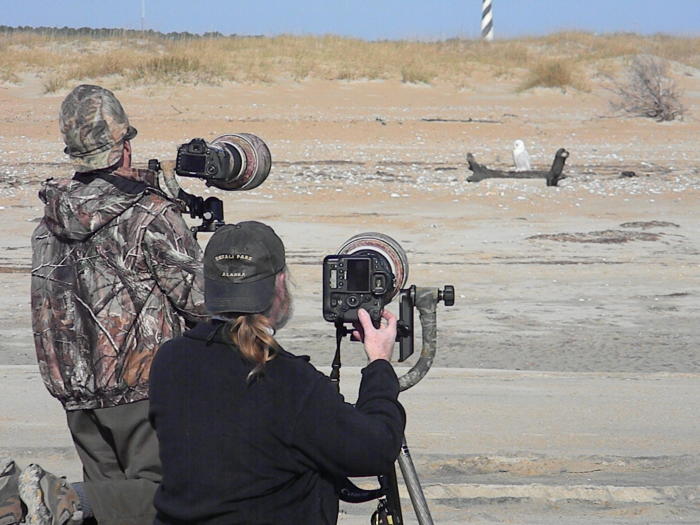
Vagrants Welcome!
Occasionally, there is a flurry of excitement from birders caused by the appearance of a vagrant species. Usually, these rare sightings are of a single individual bird which may be blown off course by a storm or for some reason that they don’t care to share with humans.
There have been sightings of yellow-nose albatross. Only three of the 17 known species of albatross breed in the Atlantic Ocean. Their breeding sites are in the far south of the ocean near Antarctica. One of the albatross species holds the record for widest wingspan of any bird. From tip to tip, the wandering albatross can measure up to 12 feet across. Like the Sooty Tern, albatross land only to breed and can stay airborne for up to five years.
Another wanderer comes from the north. Snowy Owls spend most of their lives in the Arctic Circle but every few years, the beautiful birds have an “irruption” during which they travel farther south. Scientists are still puzzled by what causes the change in habitat which seem to be getting more frequent.
Some have theorized that since lemmings are a primary part of their diet, that a bad year for lemming reproduction could be prompting them to go farther afield to find sufficient food. But whatever the reason, mention a Snowy Owl on the Outer Banks and birders head to sighting location. Photographers from major print and online journals rush to the area to snap a photo and the owls cooperate as they seem to almost pose for the pictures – as long as there is distance in between.
For the size of their body, Snowy Owls weigh the most of any species due to the dense number of feathers that protect them from the Arctic cold. And although beautiful and almost serene looking, the owls can be aggressive while defending their territory or nest. They’ve been known to dive-bomb humans and attack Arctic wolves.
What’s to love about birding the Outer Banks? Just everything.

